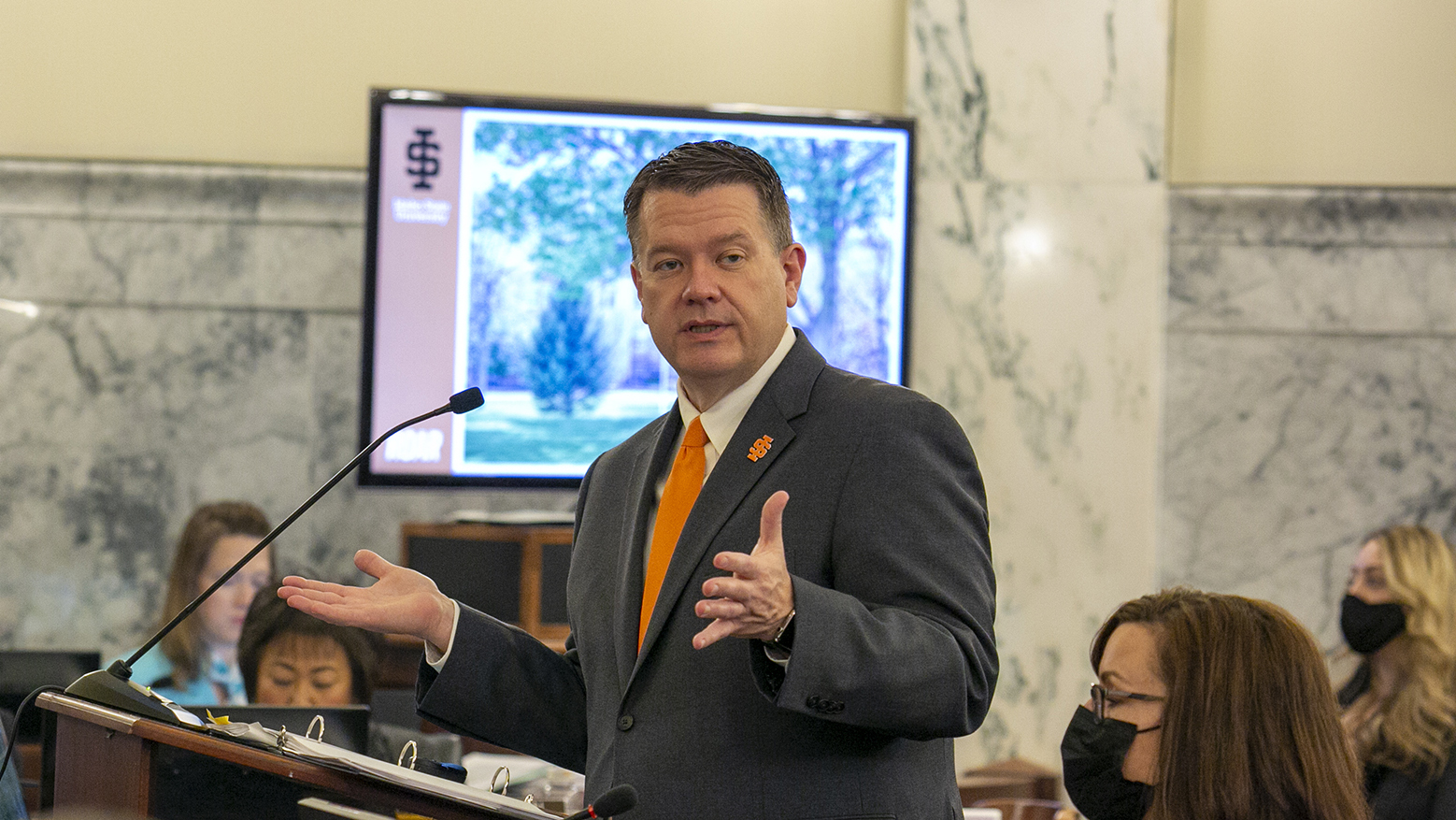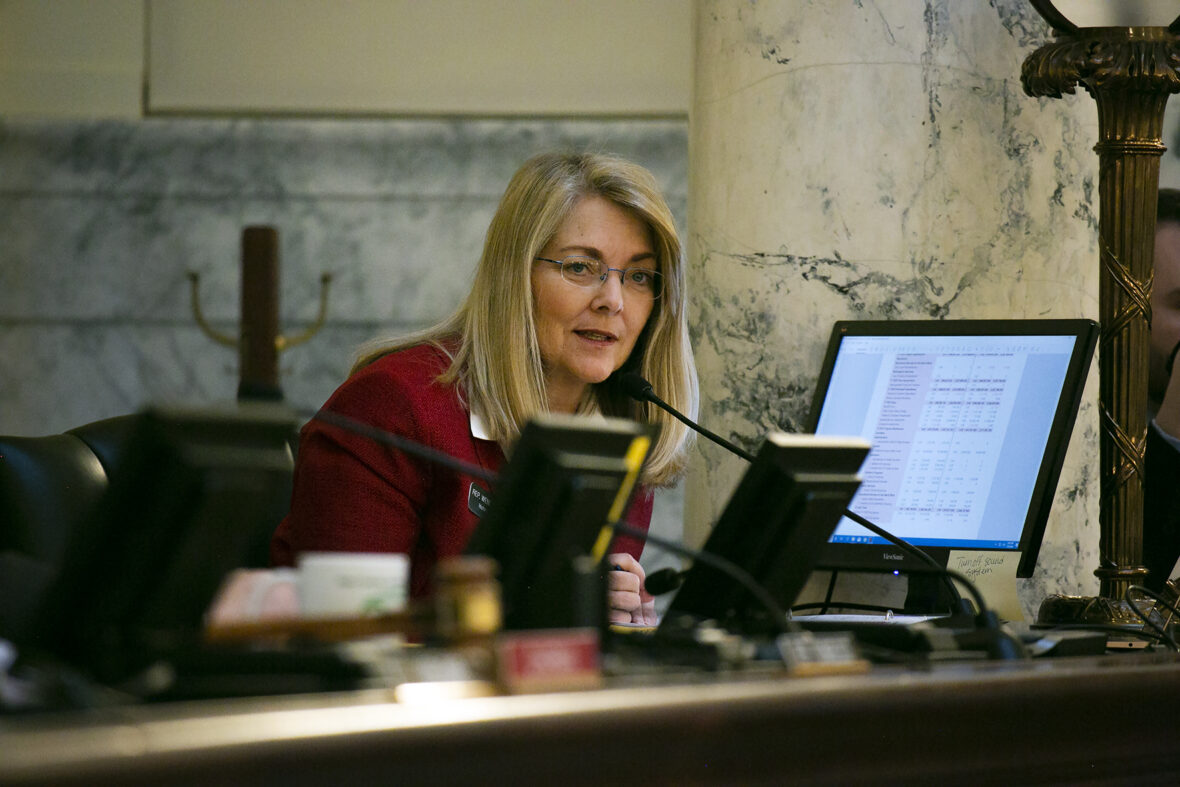
Kevin Satterlee isn’t waiting on the Legislature.
Idaho State University’s president is using private donations to hire staff to help his at-risk students — staff hires the Legislature has refused to finance.
Satterlee is gambling on using one-time money, or future donor support, to pay ongoing personnel costs. Just as significantly, he is calling out legislative budget-writers for failing to fund the additional academic advisers that will help Idaho State address its lackluster retention and graduation rates.
“These private partners see the value of what we’re trying to accomplish here,” Satterlee said at a recent State Board of Education meeting. “They see the value that others did not.”
Idaho State’s funding request didn’t get much attention this legislative session.
Gov. Brad Little included the $425,800 line item in his higher education budget request — hoping to hire four full-time academic advisers, a full-time “success coordinator” to work with first-year students in danger of dropping out, and a full-time coordinator to work with tutors (who are, by and large, graduate or upper-level students).
Satterlee pitched the line item in his Jan. 27 presentation to the Legislature’s Joint Finance-Appropriations Committee. But the big storyline from JFAC’s “Education Week,” and the university presidents’ appearances at the Statehouse, centered on diversity and inclusion and the previous Legislature’s attempts to slam the brakes on social justice spending.
The Idaho State line item went unfunded, and more or less ignored.
But Satterlee isn’t taking no for an answer. That’s where outside support comes in. Idaho State is going to use about $450,000 in private money — from donors such as the J.A. and Kathryn Albertson Family Foundation — to fund the new positions.
Basically, Satterlee doesn’t want to wait, because he doesn’t think his students can afford to wait. Staring at a six-year graduate rate of 35.9%, the lowest of Idaho’s four-year schools, he says Idaho State simply must do better. In an unflinching moment in his Jan. 27 JFAC presentation, he called the graduation rate issue “a moral imperative.”
A year ago, Idaho State launched a new program in an attempt to keep students in school — and on track for a degree. The “Navigate” online portal is designed to link struggling students with the academic guidance they need, by identifying students who are at risk, before they know they’re at risk.
The idea is for faculty to fill out progress reports at the three-week and six-week marks of the semester, flag students who are struggling, and connect these students to academic advisers.
The faculty bought in. A whopping 94% filled out the progress reports. Last spring semester, faculty turned in 2,900 “flags,” identifying some 1,100 students at risk, said Corey Zink, Idaho State’s interim dean of students and executive director for academic advising and assessment.
The faculty buy-in was “fantastic,” Zink said, but Idaho State’s 20 academic advisers “were stretched very tightly.”
Zink hopes to have the four new academic advisers hired and trained and ready for the start of fall semester in August.
While Satterlee plans to go back to the 2023 Legislature to request funding, Idaho State is prepared to use private sector funding to keep the new hires on the job. “We are not posting them as one-year positions,” Zink said.
What next year’s Legislature does with Satterlee’s funding request is anybody’s guess — especially after a rash of retirements and primary election upsets. At least 11 of JFAC’s 20 members will be newcomers. And one prominent JFAC veteran, running unopposed this year, says she doesn’t feel obligated to fund the new Idaho State positions next year.

Rep. Wendy Horman agrees that Idaho State needs to work on retention and graduation rates. But she’s not sure Idaho State will have enough time to build a data-driven case for the new hires.
“They must think they’re going to see results,” said Horman, R-Idaho Falls.
Idaho State’s numbers are preliminary, but they show promise.
At all seven of Idaho State’s colleges, this year’s fall-to-spring retention numbers beat five-year averages by at least 3 percentage points.
While 24% of new students ended their first semester with a GPA of under 2.0, that’s an improvement from a five-year average approaching 29%. GPA is an important yardstick, since students who get through their first semester with at least a 2.0 are significantly more likely to come back for their second semester.
Zink expects to have more data on the retention efforts in the fall. But he says there’s no question Idaho State needs a system to reach out and help its struggling students; it’s a necessity for a university that accepts almost all of its applicants.
“We have needed a support system that matches that admissions approach,” he said.
Hence Satterlee’s gamble. And his not-so-veiled challenge to the Legislature — at a time when the relationship between lawmakers and higher education can best be described as “complicated.”
This might not be as visceral as the Statehouse debate over social justice, but it’s an important milestone nonetheless.
Disclosure: Idaho Education News is funded through a grant from the J.A. and Kathryn Albertson Family Foundation.
Kevin Richert writes a weekly analysis on education policy and education politics. Look for his stories each Thursday.
